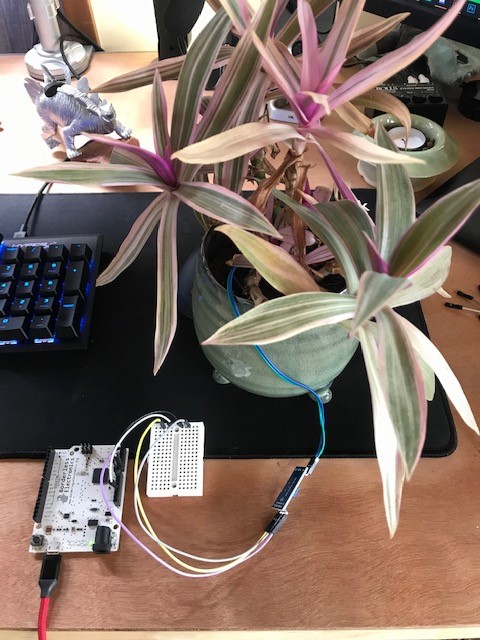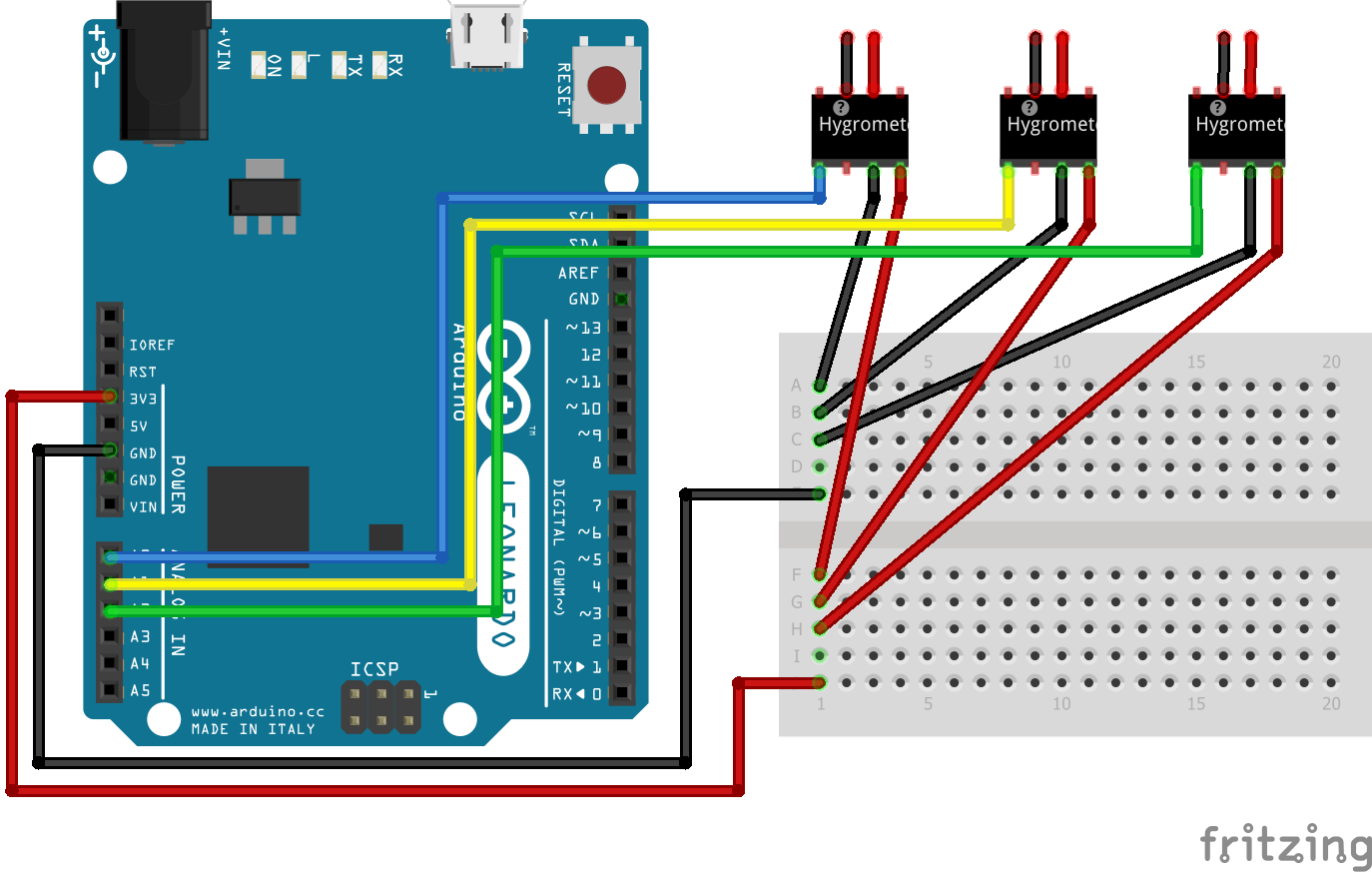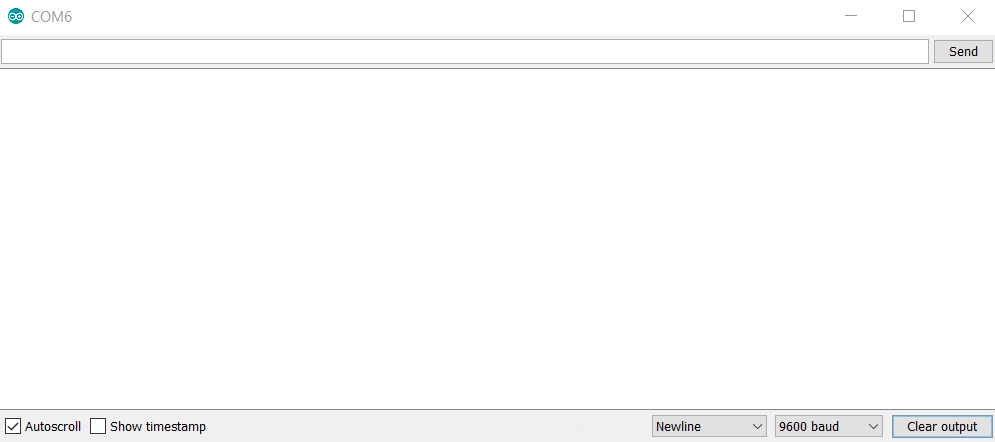Hey everyone!
I recently attended the GeekWire Cloud Summit in Seattle, and listened to a great fireside chat with Kevin Scott, the CTO of Microsoft. Although he covered a wide range of subjects, he touched on how some Azure customers are using IoT to add value to the agriculture industry. That was all it took for me to start shopping around for some parts to see if I could spin up a proof of concept.
This project isn’t finished yet, but I have reached the first milestone- get soil humidity of plants. I’ll follow up with another post as I build out the notification system.
The Problem
I’m not the green thumb of the house- that’s Lindsey’s specialty. I do, however, enjoy having lots of greenery around my desk. I often neglect my plants (poor babies) and although I haven’t killed any yet, they get pretty sad when they’re not watered.
The Solution
I’d like to be notified when the plants are drying out. I can use a simple sensor (hygrometer) to detect soil humidity, and use that data to establish some thresholds around alerting.

The Materials
Hardware
Software
Procedure
I’ve had an Arduino sitting unused in my parts kit for the better part of a decade, so I was happy to finally have a use for it.
Connect the Arduino to your computer via USB.
Connect a hygrometer to the Arduino. The diagram below skips ahead to showing multiple, but it’s best to focus on one and get it working before adding more. Make sure you grab 3.3V- powering with 5V will likely damage your sensors.

Write a script to read from the hygrometer and upload it to the Arduino through the Arduino IDE. Here’s some super rough code:
1
2
3
4
5
6
7
8
9
10
11
12
13
14
15
16
17
18
19
20
21
22
23
24
25
26
27
28
29
30
31
32
33
34
35
36
37
38
39#define M0 A0 // The definition of AO pin IO-A0
// The analog values passed to the sensor are between 0 and 1023.
int wetValue = 0;
int dryValue = 1023;
// We'd like the values to be between 0 and 100, for % humidity.
int friendlyWetValue = 100;
int friendlyDryValue = 0;
void setup() {
// Initialize our pin.
pinMode(A0, INPUT);
// Open up serial coms.
Serial.begin(9600);
}
void loop() {
Serial.println("Soil Humidity Measurements:");
// Read the value from the pin.
int rawValue = analogRead(A0);
Serial.print("Raw: ");
Serial.print(rawValue);
Serial.print(" | ");
// Use the map function to normalize the voltage values between 0 and 100.
int friendlyValue = map(rawValue, dryValue, wetValue, friendlyDryValue, friendlyWetValue);
Serial.print("Friendly: ");
Serial.print(friendlyValue);
// Wait 60 seconds before taking the next measurement.
delay(60 * 1000);
}Observe hygrometer outputs in the serial console. This plant is thirsty!

Connect multiple hygrometers and update the script to handle them. I got lazy and copy/pasted the original code a few more times, this can get refactored later but it’s not important to me right now. Check out the updated Arduino Sketch for Soil Humidity on GitHub.
So Now What?
The Arduino can now read the soil humidity, but we can only observe the values through the IDE’s serial monitor. This isn’t the standalone solution that I’m looking for- I’d like to power this through a 5v USB cable and communicate over WiFi. Once that’s done, I can start to work on sending the data to the cloud, where there’s plenty of cool stuff we can do with it such as sending alerts and charting out historical data.
Future Work
Get Arduino on WiFi
It looks like there are new Arduino revisions coming out soon that have WiFi built in, but my old Arduino Leonardo doesn’t have that capability. I’ve been reading about the ESP8266 chip and that seems like the route to go. You can buy Arduino WiFi shields that are ‘plug and play’ for ~$35 but the $2.50 ESP8266 is a good opportunity to learn some new stuff and save a few bucks.
Send Data to AWS IoT from Arduino
I’ve done plenty of AWS IoT work using the NodeJS SDK so hopefully some of that transfers. The Arduino runs C though, and I’ll have to figure out how to add libraries to the Arduino package. I’ll also have to figure out how to load x.509 certs onto the Arduino. Once that’s sorted out, I can send data to AWS IoT and use the rules engine to connect my data stream however I’d like.
Act on IoT Data
I’ve got a couple of things to figure out here. In the past I’ve just sent data to CloudWatch and configured alarms based off of that, but I’d like to explore some of the other features that AWS IoT offers. More research and fiddling is needed here.
Store Data
I’m not concerned about storing data except to look at trends later on- if I went the CloudWatch route I’d get all of this out of the box. I might be convincing myself just to do CloudWatch :)